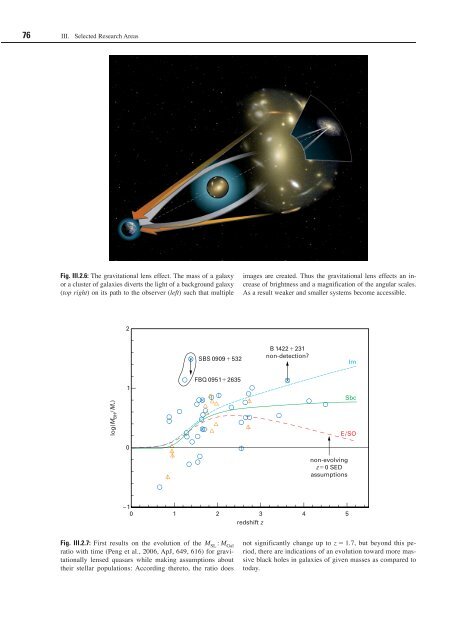Max Planck Institute for Astronomy - Annual Report 2007
Max Planck Institute for Astronomy - Annual Report 2007
Max Planck Institute for Astronomy - Annual Report 2007
Create successful ePaper yourself
Turn your PDF publications into a flip-book with our unique Google optimized e-Paper software.
76 III. Selected Research Areas<br />
Fig. III.2.6: The gravitational lens effect. The mass of a galaxy<br />
or a cluster of galaxies diverts the light of a background galaxy<br />
(top right) on its path to the observer (left) such that multiple<br />
log(M BH /M * )<br />
2<br />
1<br />
0<br />
–1<br />
0<br />
SBS 0909532<br />
FBQ 09512635<br />
1 2 3<br />
redshift z<br />
Fig. III.2.7: First results on the evolution of the M SL : M Gal<br />
ratio with time (Peng et al., 2006, ApJ, 649, 616) <strong>for</strong> gravitationally<br />
lensed quasars while making assumptions about<br />
their stellar populations: According thereto, the ratio does<br />
images are created. Thus the gravitational lens effects an increase<br />
of brightness and a magnification of the angular scales.<br />
As a result weaker and smaller systems become accessible.<br />
B 1422231<br />
non-detection?<br />
non-evolving<br />
z0 SED<br />
assumptions<br />
Im<br />
Sbc<br />
E/SO<br />
4 5<br />
not significantly change up to z 1.7, but beyond this period,<br />
there are indications of an evolution toward more massive<br />
black holes in galaxies of given masses as compared to<br />
today.

















